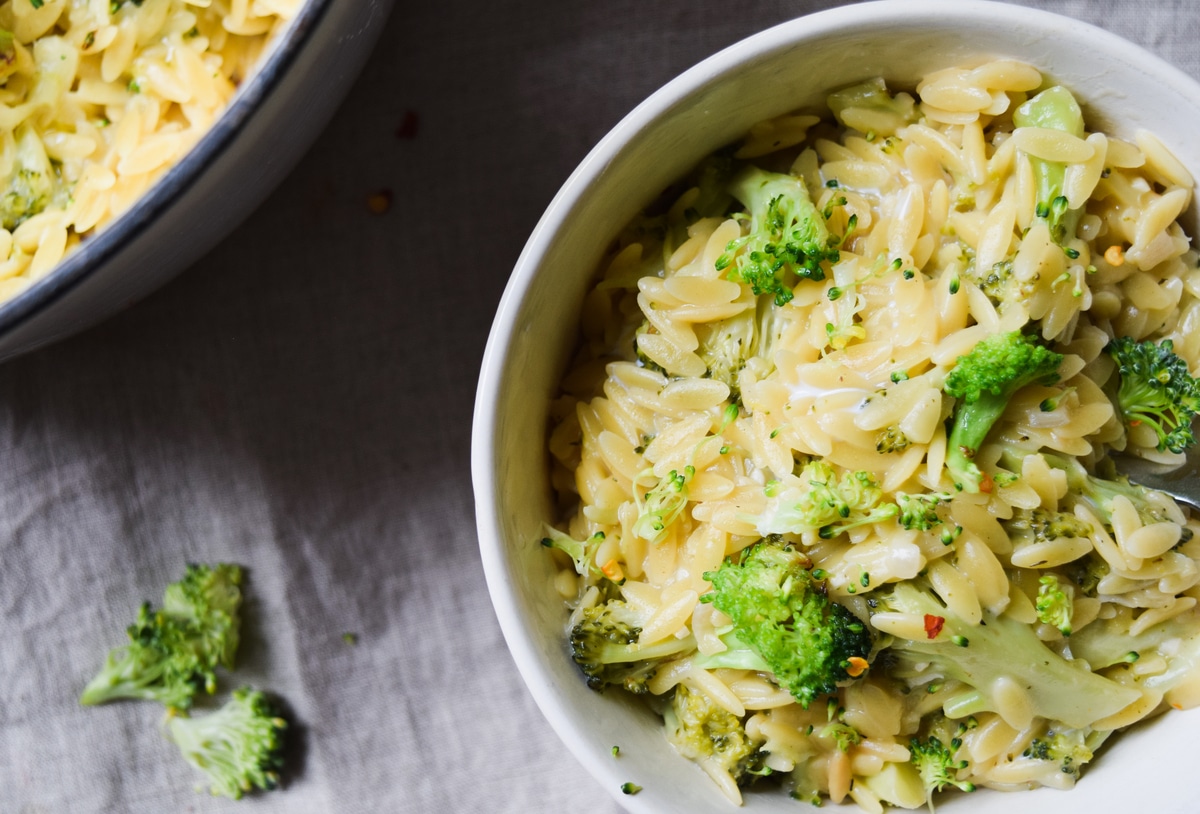There’s a reason our parents told us to eat our broccoli. And we agree, this powerhouse cruciferous vegetable rarely gets the spotlight it deserves.

In the Garden
October means broccoli season! Broccoli belongs to the brassica family along with cauliflower, cabbage, kale, and brussels sprouts. Broccoli is a cool season crop so it should be planted in early spring, six weeks before the last frost. Sow broccoli seeds ½ inch deep and 3-inches apart with rows 3 feet apart. Provide consistent soil moisture, especially in drought conditions. Roots will be shallow, so do your best not to disturb the plants.
Plants need a minimum of 5 hours of sunlight daily. A lack of sunlight may produce thin plants and subpar heads. Harvest your broccoli heads in the morning when they are firm and tight. Harvest by cutting on a slant, taking at least 6 inches of stem with the head. If you notice yellow petals, harvest crowns immediately.
Check out the MSU extensions guide to growing broccoli for more information.
In the Medicine Cabinet
Known as the ‘Crown Jewel of Nutrition’, broccoli is full of vitamin C, vitamin K, iron, and potassium. Broccoli is also full of beneficial antioxidants, sulforaphane, and fiber.
Fiber promotes good digestion, keeping your gut happy and healthy. Have you ever heard of the gut microbiome? While researchers still have much to learn about the gut microbiome, they have identified the many important roles it plays in maintaining health. It is made up of trillions of bacteria, microbes, and fungi living in your digestive tract. And the soluble fiber found in many fruits and vegetables, like broccoli, provide food for these beneficial gut bacteria to prosper. Soluble fiber can also help lower “bad” cholesterol leading to cardiovascular benefits. Insoluble fiber dissolves in your digestive tract forming a gel-like substance that adds bulk to help keep things moving.
In the Kitchen
When you think of broccoli, you are most likely picturing a hybrid of Italy’s ‘Calabrese’ variety. But there are many other varieties available including Broccoli Rabe, Chinese Broccoli, and Romanesco.
The key to enjoying vegetables, especially ones that many of us were forced to eat as kids, is to learn how to cook them well. Forget the soggy microwave broccoli (unless that is your jam, no judgment here). Perfectly roasted and seasoned broccoli is delicious in its own right. To make your own, check out Love and Lemons’ guide to roasting broccoli.
Broccoli can also easily be incorporated into a variety of dishes. For inspiration, check out some of these recipes:
- Broccoli Cheddar Frittata
- Broccoli Salad
- Beef and Broccoli Noodle Stir Fry
- Broccoli Pesto Pasta
- Cheesy Cauliflower Rice & Broccoli Bake
- Broccoli Slaw
One-Pot Broccoli Cheddar Orzo

Tender orzo pasta with sautéed broccoli cooked in a creamy cheese sauce. This recipe is delicious on its own, but would also be great paired with your favorite protein.
Ingredients
- 2 cups dried orzo
- 2 Tbsp olive oil
- 2 Tbsp butter
- 4 cloves garlic, minced
- 2-3 cups broccoli, cut into small florets
- 2 cups whole milk
- 3 cups cheddar cheese, shredded
- ¼ tsp paprika
- Salt and pepper to taste
Instructions
- Cook orzo in a pot of boiling, salted water according to package directions. Cook until pasta is slightly less than al dente. Reserve a bit of the pasta water. Drain and set aside.
- Heat the same pot over medium heat. Add the butter and olive oil to the pot. Add in the garlic and cook for 30 seconds until fragrant. Add in the broccoli florets and cook for 3-4 minutes.
- Pour in the milk, 1 cup of the cheese, the paprika, and a pinch of salt and pepper. Stir to combine and bring the mixture to a simmer. After 1-2 minutes, add in another cup of the cheese and stir continuously until smooth. Add the orzo, remaining cheese, and ¼ cup of reserved pasta water and stir to combine. Bring the mixture back to a simmer for 3-5 minutes, stirring often.
- When the sauce thickens to your liking, turn off the heat. Taste and adjust seasonings to your liking. Serve immediately and enjoy!
